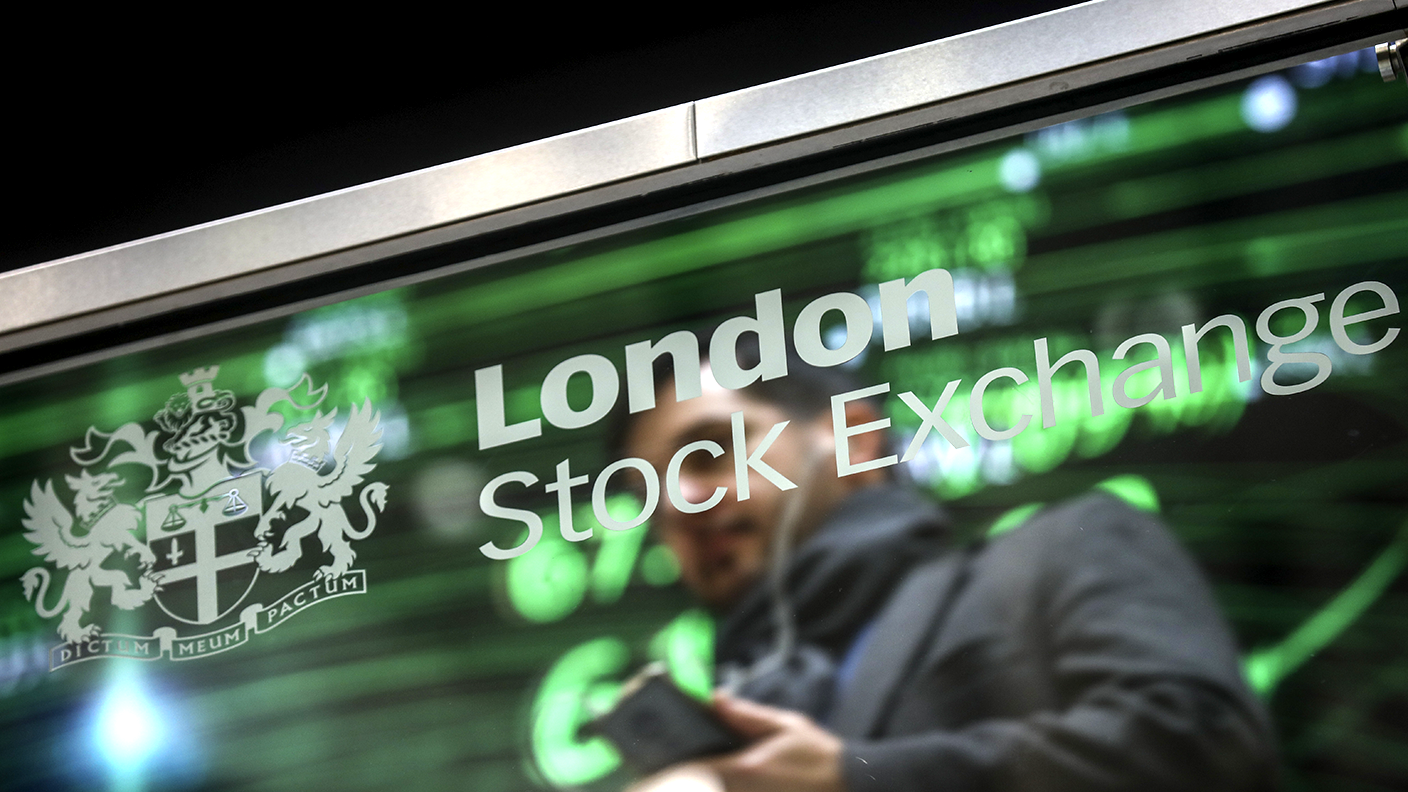A first-half home run for investment trusts
The investment trust sector has seen some extraordinary performance in the first half of this year. Max King looks at what's behind it, and asks: is it set to continue or is it just a flash in the pan?

Anyone who predicted the market crash of the first quarter, in which the FTSE All-share index fell by 35% in five weeks, would also likely have predicted that investment trusts would under-perform, due to widening discounts to net asset value (NAV – the value of the underlying portfolio) and the debt employed to enhance returns in rising markets (also known as gearing).
Those were certainly negative factors on the way down. The average discount widened from 2% to 22%, before narrowing to 11% on April 3rd.
Yet by then, with the All-share index still down 29% year to date, the investment companies sector was already 7% ahead. And that lead continued to grow.
MoneyWeek
Subscribe to MoneyWeek today and get your first six magazine issues absolutely FREE

Sign up to Money Morning
Don't miss the latest investment and personal finances news, market analysis, plus money-saving tips with our free twice-daily newsletter
Don't miss the latest investment and personal finances news, market analysis, plus money-saving tips with our free twice-daily newsletter
At the end of June, the All-share index was still down 17.5% – but the investment companies sector was down just 3.5%, 14% ahead, helped by the sector average discount falling to 6.7%.
Not bad at all.
A strong first-half performance for investment companies
Against the MSCI World index, which rose by 0.5% in the first half, the overall performance of the investment trust sector looks less impressive than against the FTSE All-share.
But this ignores the heavy geographic bias of the sector, which has a higher exposure to the UK markets (which comprise just 4% of the MSCI All Countries index) than to the US (58%).
When each sub-sector is compared against its respective index, investment companies outperformed across most areas, often by significant margins, though the disparity with rivals was often huge. For example, Scottish Mortgage, the sector’s £12.6bn giant, returned 43%, while Witan lost 15%.
Meanwhile, few UK specialists did well, not helped by the underperformance of smaller and mid-cap companies. But technology and healthcare specialists had an outstanding six months.
Alternative income funds accounted for 39% of the sector at the start of the year and would have been defensive on the way down, notwithstanding widening discounts, but they didn’t hold the sector back on the way up.
Meanwhile, open-ended funds continued, on average, to underperform, encouraging the relentless shift of investors from active to passive funds.
So what is the explanation for the investment trust sector’s extraordinary performance – and is it set to continue or just a flash in the pan?
Investment companies tend to beat open-ended funds
A considerable body of research shows that investment companies nearly always outperform their open-ended equivalents over all time periods, even when the funds have the same manager investing in the same area of the market.
Since the long-term trend of markets is upwards, the use of debt to enhance performance has usually helped; and discounts have steadily narrowed.
More importantly, it is easier to manage a fixed pool of money than a constantly changing one, with new investors flooding in at market highs and out at their lows. But those factors do not explain the first half of 2020.
The stock selection of most investment trust managers must have been considerably better for closed-end funds than open-ended ones – but why? How did so many managers avoid the value traps that so many others fell into?
The answer may lie in the focus of investment trust managers on performance, egged on by their non-executive directors, peer pressure, brokers, investors (especially direct ones) and the financial media. The pressure on open-ended fund managers is far less and performance may not even be their prime consideration.
Many fund management companies are more focused on their own growth and profitability than on their clients’ performance, and good performance does not sell itself. Their strategy is to avoid losing clients as much as it is to gain them.
Clients are lost when performance falls into the fourth quartile of comparable funds and this dictates avoiding what is seen as “risk” - too wide a departure from a benchmark weighting, paying up for growth and standing out from the crowd.
But in avoiding this fourth quartile, fund managers are also denying themselves a chance of being in the first quartile. Pottering along in the second quartile is seen as ideal but, in practice, that usually means trailing behind the benchmark.
The sales force is then set to work spinning an explanation of how the “risk-adjusted” performance was better than it looks and dull performance reflected a “sensibly cautious” approach.
There are plenty of open-ended fund managers who do not share this culture at all – notably Baillie Gifford, JO Hambro, Polar Capital and Fundsmith. These are firms that prefer to grow organically than by acquisition, who put talented managers in the limelight rather than hide them in teams, and understand that though performance does not sell itself, it’s better for sales than poor performance.
A culture of performance
Still, the culture of performance is deeply embedded in investment companies, not least by the risk that the directors will move the management contract elsewhere if performance is persistently poor.
This is what may happen at Temple Bar, one of the sector’s casualties in 2020, though there is a severe risk that the Board is throwing in the towel just when investing for recovery is seeing the best market conditions for a decade.
The funds once managed at Invesco by Neil Woodford are also on the move, and a number of alternative income funds have struggled badly, notably in parts of the property and debt sectors. As always, market turbulence has exposed weak investment strategies at the same time as it has proved the resilience of strong ones.
The strong overall performance can only increase the long-term confidence of investors in the sector. There have been no new issues in recent months but issuance by existing trusts has been solid – more than £400m even in March and subsequently rising – and buy-back activity has fallen.
The average discount is now 6.7% and investment companies have protected investors from dividend cuts by digging into their revenue reserves or paying out of capital. Performance was excellent in the stable market conditions of last year, was even better in relative terms in the volatility of 2020, and looks set to continue strongly as economies and markets return to normal.
In short, the renaissance of investment companies still has a long way to go.
Get the latest financial news, insights and expert analysis from our award-winning MoneyWeek team, to help you understand what really matters when it comes to your finances.

Max has an Economics degree from the University of Cambridge and is a chartered accountant. He worked at Investec Asset Management for 12 years, managing multi-asset funds investing in internally and externally managed funds, including investment trusts. This included a fund of investment trusts which grew to £120m+. Max has managed ten investment trusts (winning many awards) and sat on the boards of three trusts – two directorships are still active.
After 39 years in financial services, including 30 as a professional fund manager, Max took semi-retirement in 2017. Max has been a MoneyWeek columnist since 2016 writing about investment funds and more generally on markets online, plus occasional opinion pieces. He also writes for the Investment Trust Handbook each year and has contributed to The Daily Telegraph and other publications. See here for details of current investments held by Max.
-
 London claims victory in the Brexit wars
London claims victory in the Brexit warsOpinion JPMorgan Chase's decision to build a new headquarters in London is a huge vote of confidence and a sign that the City will remain Europe's key financial hub
-
 The reinvention of the high street – and how to invest
The reinvention of the high street – and how to investThe high street brands that can make shopping and leisure an enjoyable experience will thrive, says Maryam Cockar
-
 What's behind the big shift in Japanese government bonds?
What's behind the big shift in Japanese government bonds?Rising long-term Japanese government bond yields point to growing nervousness about the future – and not just inflation
-
 Halifax: House price slump continues as prices slide for the sixth consecutive month
Halifax: House price slump continues as prices slide for the sixth consecutive monthUK house prices fell again in September as buyers returned, but the slowdown was not as fast as anticipated, latest Halifax data shows. Where are house prices falling the most?
-
 Rents hit a record high - but is the opportunity for buy-to-let investors still strong?
Rents hit a record high - but is the opportunity for buy-to-let investors still strong?UK rent prices have hit a record high with the average hitting over £1,200 a month says Rightmove. Are there still opportunities in buy-to-let?
-
 Pension savers turn to gold investments
Pension savers turn to gold investmentsInvestors are racing to buy gold to protect their pensions from a stock market correction and high inflation, experts say
-
 Where to find the best returns from student accommodation
Where to find the best returns from student accommodationStudent accommodation can be a lucrative investment if you know where to look.
-
 The world’s best bargain stocks
The world’s best bargain stocksSearching for bargain stocks with Alec Cutler of the Orbis Global Balanced Fund, who tells Andrew Van Sickle which sectors are being overlooked.
-
 Revealed: the cheapest cities to own a home in Britain
Revealed: the cheapest cities to own a home in BritainNew research reveals the cheapest cities to own a home, taking account of mortgage payments, utility bills and council tax
-
 UK recession: How to protect your portfolio
UK recession: How to protect your portfolioAs the UK recession is confirmed, we look at ways to protect your wealth.
